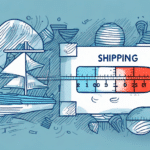How Much Does AHS Weight Affect Your FedEx Shipping Costs?
If you're a frequent user of FedEx shipping services, you've likely come across the term "AHS" (Actual Hold Size) at some point. AHS refers to the total weight and size of a package, encompassing both its actual weight and any dimensional weight that may apply. Understanding how AHS impacts your FedEx shipping costs is crucial for optimizing your shipping strategy and minimizing expenses. This guide delves into the intricacies of AHS and its significance in FedEx shipping.
Understanding AHS and Its Importance for FedEx Shipping
AHS is a critical factor in determining your FedEx shipping costs. Essentially, as the AHS of your package increases, so do your shipping expenses. FedEx calculates the billable weight of your shipment by considering both the actual weight and the dimensional weight of your package. The billable weight is the greater of these two values, ensuring that FedEx covers the cost of handling, transporting, and delivering packages of varying sizes and weights.
For more detailed information on FedEx's billing practices, you can refer to their billing guide.
The Role of Dimensional Weight in FedEx Shipping
Dimensional weight is a pricing technique used by FedEx to account for the space a package occupies in relation to its actual weight. It is calculated using the package's dimensions—length, width, and height—and a standard divisor set by FedEx. This divisor varies based on the shipping service used and is subject to periodic updates.
For example, if you have a small but heavy package, the actual weight might be the determining factor for shipping costs. Conversely, a large but lightweight package may incur higher charges based on its dimensional weight. According to FedEx's dimensional weight policy, understanding this concept can help you better estimate your shipping costs.
Calculating AHS: A Step-by-Step Guide
Accurately calculating AHS is essential to avoid unexpected shipping costs. Follow these steps to determine your AHS:
- Measure the length, width, and height of your package in inches. Round each measurement up to the nearest whole number.
- Multiply the length, width, and height to obtain the total cubic inches.
- Divide the total cubic inches by the dimensional weight divisor used by FedEx. As of 2023, the standard divisor for FedEx Ground is 139.
- Compare the actual weight and dimensional weight. The higher value becomes your AHS, which will be used to determine shipping costs.
For the most accurate and up-to-date divisors, visit FedEx's dimensional weight page.
Avoiding Extra Charges: Accurate AHS Calculation Techniques
To prevent unexpected fees, it's essential to calculate AHS precisely. Here are some strategies to ensure accuracy:
- Use Reliable Tools: Invest in a digital shipping scale and a measuring tape to obtain precise measurements and weights.
- Leverage FedEx's Online Tools: Utilize FedEx’s shipping calculators to automatically compute AHS based on your package details.
- Stay Updated: FedEx periodically updates its dimensional weight divisors and shipping rates. Regularly check their website or subscribe to their newsletters for the latest information.
Common Mistakes in Measuring AHS for FedEx Shipping
Accurate measurement is crucial for correct AHS calculation. Avoid these common errors:
- Excluding Packaging Materials: Ensure that all packaging components, including padding, labeling, and protective materials, are included in your measurements.
- Incorrect Dimensional Measurements: Measure each side of the package precisely. Avoid measuring boxes diagonally, as this can lead to inaccurate dimensional weight calculations.
- Overlooking Weight Limits: Verify that your package's actual weight does not exceed FedEx’s maximum weight limits for the chosen shipping service.
For detailed measurement guidelines, refer to FedEx's shipping resources.
Optimizing AHS and Saving Money on FedEx Shipping
Optimizing your AHS can lead to significant savings on shipping costs. Consider the following tips:
- Choose the Right Packaging: Use smaller, lighter boxes to minimize both actual and dimensional weight. Reuse packaging materials when possible.
- Consolidate Shipments: Combine multiple items into a single package to reduce the number of shipments and take advantage of bulk shipping rates.
- Utilize FedEx Discounts: Take advantage of FedEx’s volume shipping discounts and promotional offers. Check their discounts page for eligibility and application details.
Implementing these strategies can help lower your overall shipping expenses while maintaining efficiency.
The Impact of Incorrect AHS Calculation on Your FedEx Shipping Costs
Miscalculating AHS can lead to several unfavorable outcomes:
- Additional Fees: Underestimating AHS may result in surcharges or penalties from FedEx for incorrect billing.
- Delayed Shipments: Packages flagged for incorrect AHS may be held up during transit, causing delivery delays and potential customer dissatisfaction.
- Insurance and Liability Issues: Incorrect AHS can affect insurance coverage. In case of loss or damage, reimbursement may be limited if the declared AHS was inaccurate.
To mitigate these risks, always double-check your measurements and weight before finalizing shipments.
The Future of AHS for FedEx Shipping: Trends and Predictions
The shipping industry is continually evolving, with several trends likely to influence the future of AHS calculation:
- Increased Automation: Advanced technologies, including AI and machine learning, may enhance the accuracy and efficiency of AHS calculations.
- Sustainable Packaging: With a growing emphasis on sustainability, FedEx and other carriers may prioritize eco-friendly packaging solutions, potentially impacting dimensional weight policies.
- Dynamic Pricing Models: As e-commerce grows, FedEx may adopt more flexible pricing models that account for real-time shipping data and customer preferences.
Staying informed about these trends can help businesses anticipate changes and adapt their shipping strategies accordingly.
Conclusion
AHS plays a pivotal role in determining your FedEx shipping costs. Accurate calculation of AHS, which considers both actual and dimensional weight, is essential to avoid unexpected charges and optimize your shipping expenses. By understanding the factors that influence AHS and implementing best practices for measurement and packaging, you can enhance your shipping efficiency and cost-effectiveness.
For ongoing support and resources, consider visiting FedEx’s customer support page or utilizing their online tools to streamline your shipping processes.




















